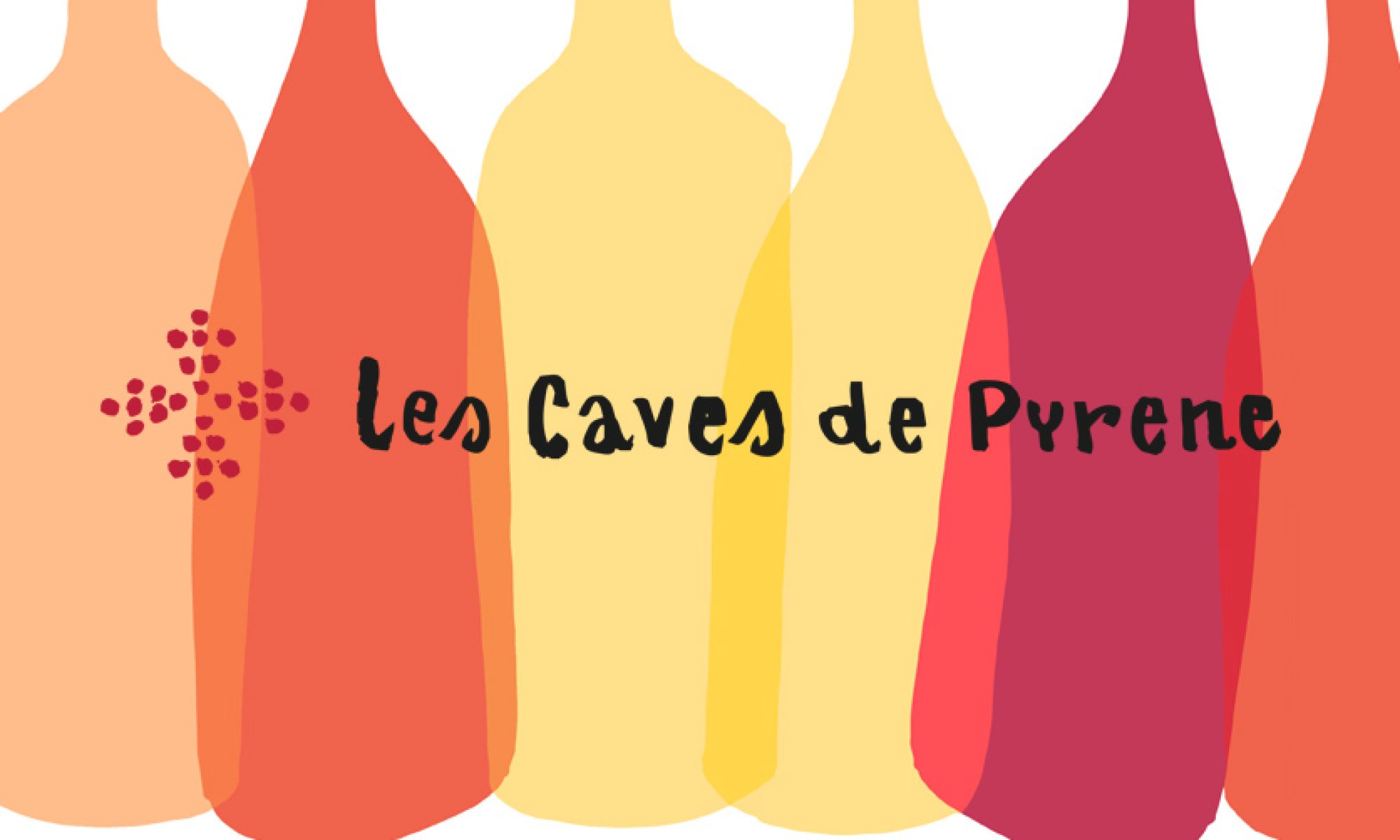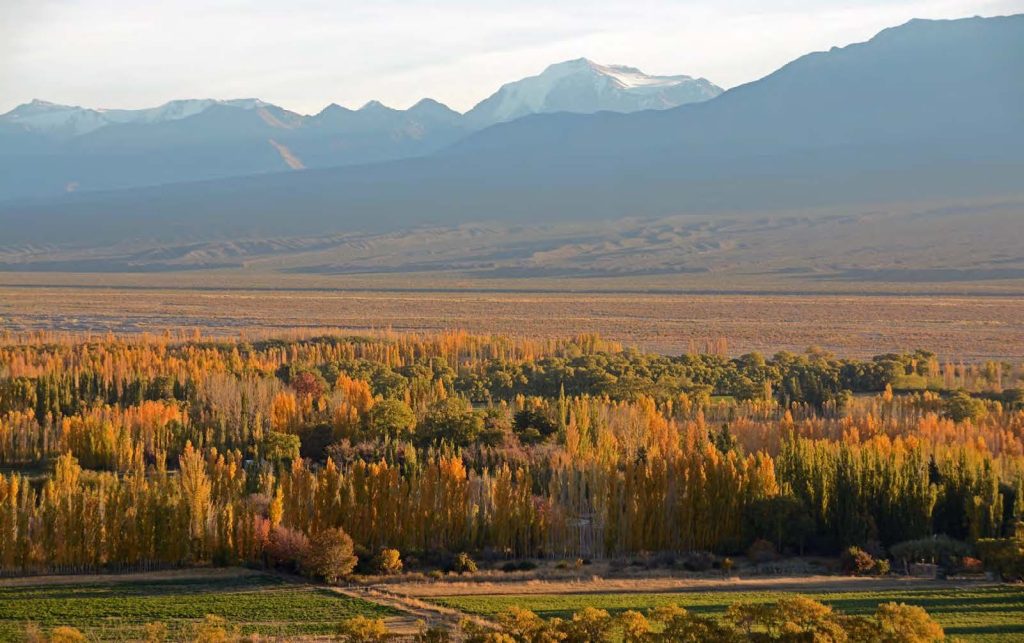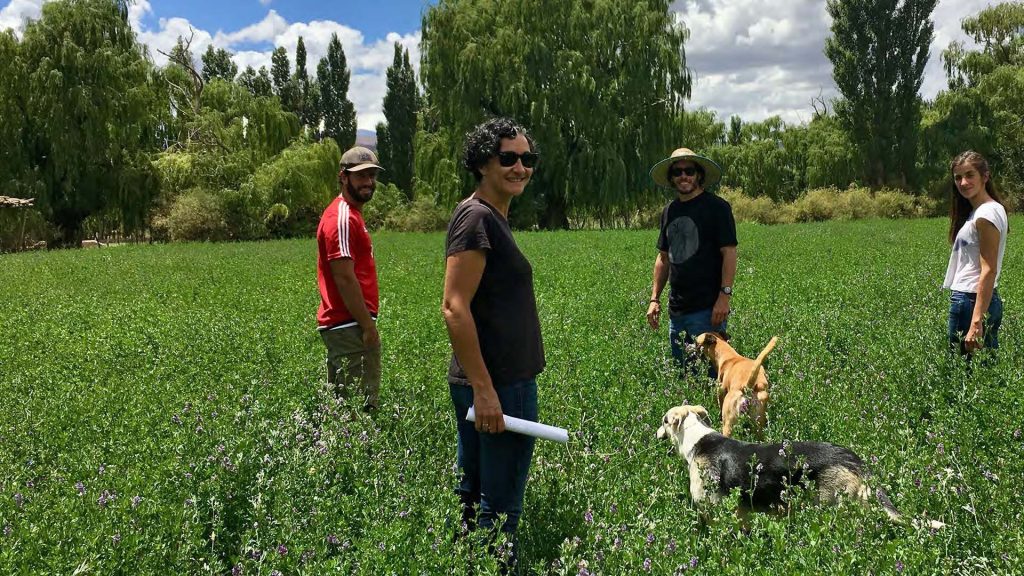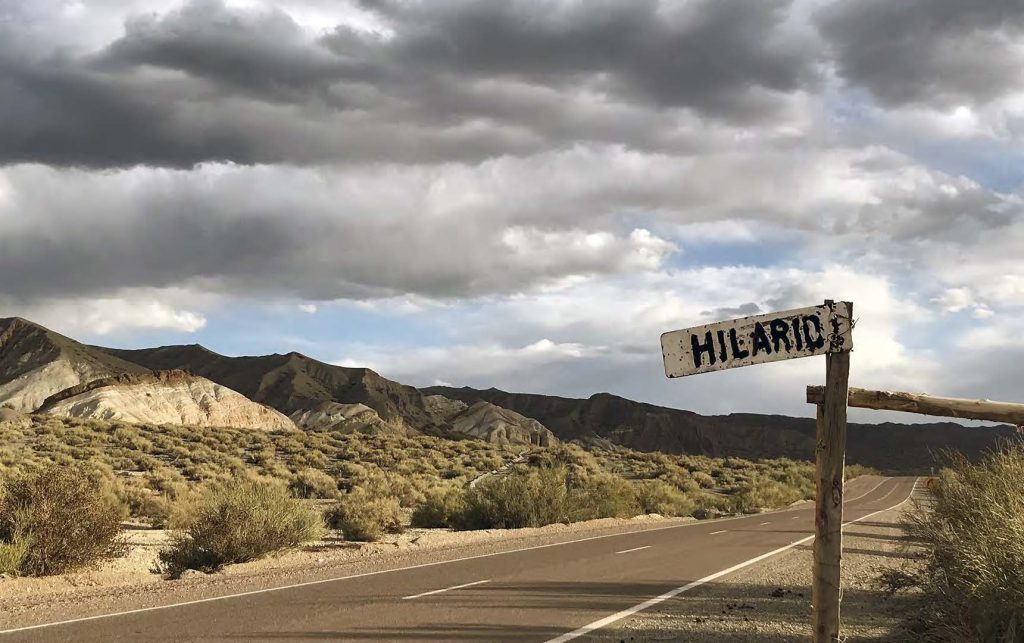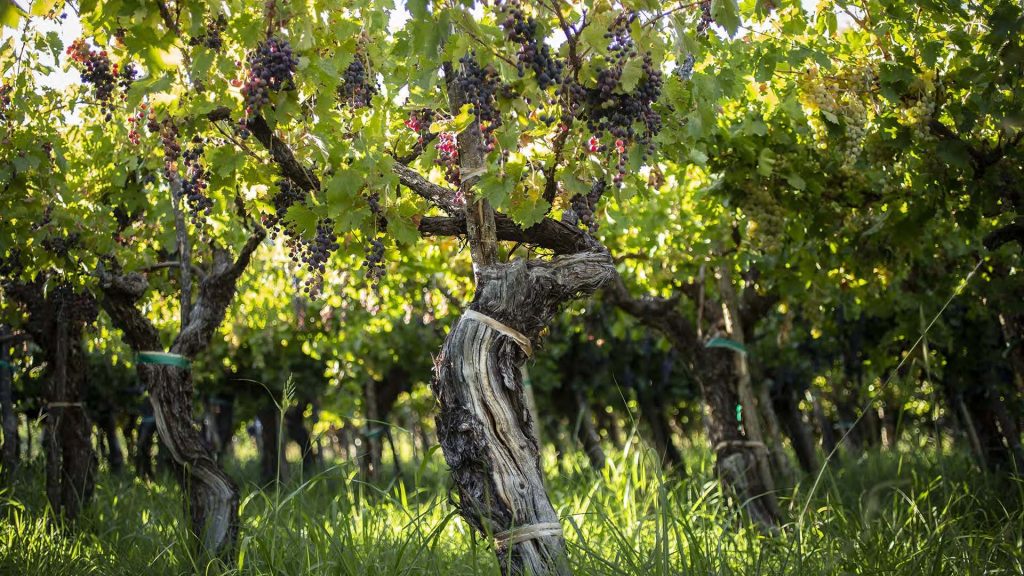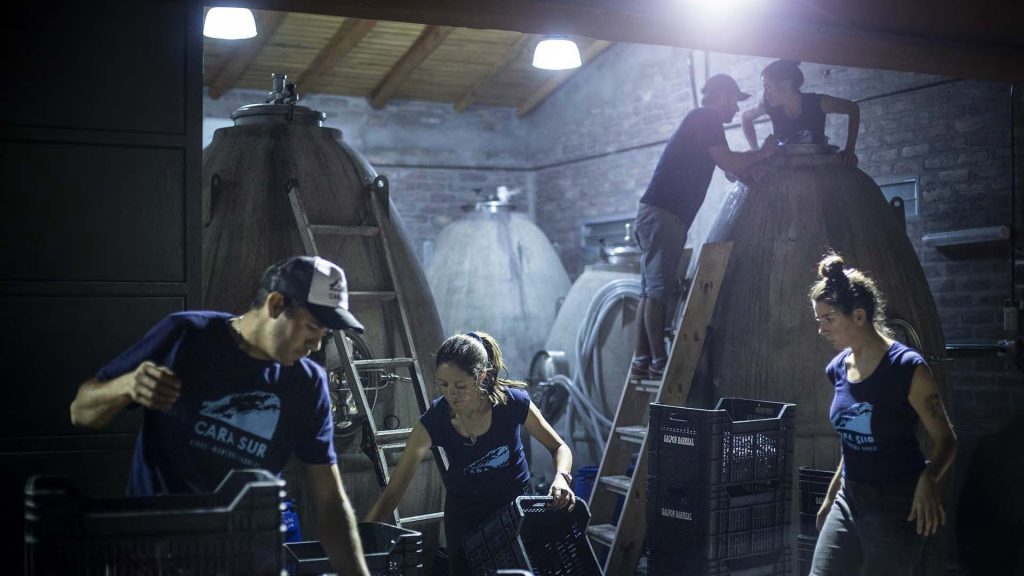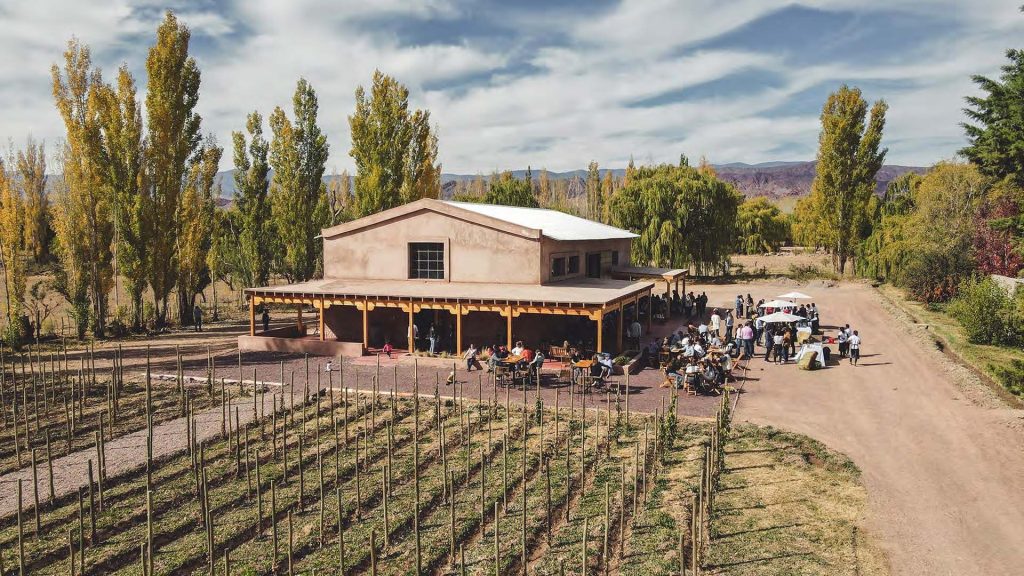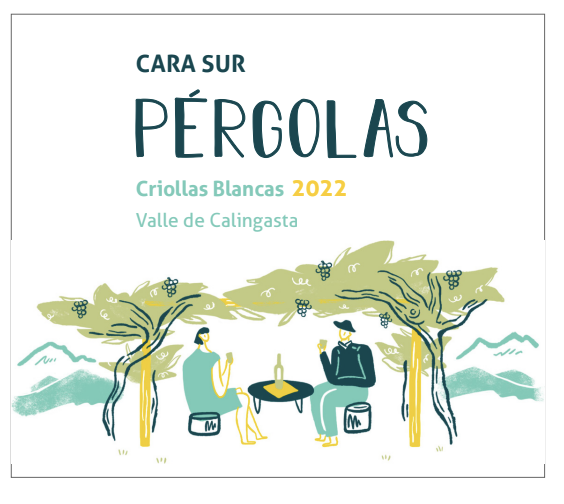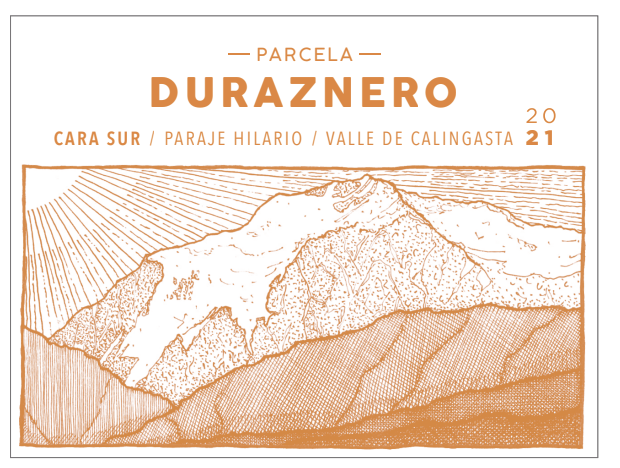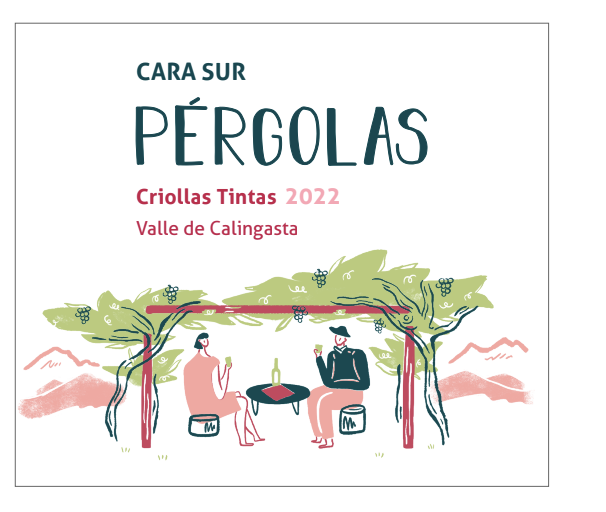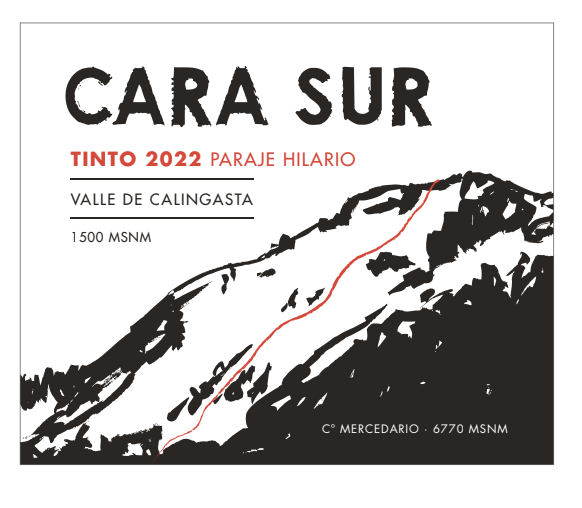…Or how we learned to love criollas
A Q&A
Argentinean wines and Les Caves de Pyrene?
Don’t look so surprised!
What’s the deal with Cara Sur?
Cara Sur is a project and lovechild of four wine enthusiasts who wish to exalt the terroir of the Calingasta Valley and make wines using criollas.
Criollas?
Native grape varieties.
Let’s go back the beginning. Who are these pioneers?
Cara Sur was formed in 2011 as a partnership between two couples inspired to revive ancestral vines and produce wines from traditional Argentine varietals. Sebastián Zuccardi and Marcela Manini teamed up with Nuria Año Gargiulo and Pancho Burgallo, an avid mountaineering couple who live in Barreal, in the Calingasta Valley of San Juan, north of Mendoza. They produce wines from 80-year-old vines of Moscatel, Moscatel Negro, Bonarda Piedmontese, and Criolla Chica (the Argentine iteration of Pais) – amongst others.
Where are we in the wider area of wine-producing Argentina?
Zooming out for a moment, we are in the greater San Juan region, north of Mendoza, but that does not begin to tell the story about this isolated location. This is the north-south running Calingasta Valley, surrounded by mountains, wedged between the Precordillera and monumental rampart of the Cordillera de la Ramada that divides Chile and Argentina. The valley has the influence of three rivers: Los Patos; Castaño and Calingasta. The vineyards and winery are centred on the villages of Barreal, Hilario and Calingasta. These are tiny remote places with a narrow road and would be effectively desert, were it not for the rivers bringing glacial melt down. Needless to say, regular irrigation is used.
Tell me more about the vineyards and place.
The vines are Parral trained, a ceiling-trellised system that provides shade and maximises airflow. The main vineyard sits alongside the Los Patos River on stony soil at 1500 metres above sea level. The Cara Sur wines are made in a tiny winery next to Pancho and Nuria’s home where they produce small quantities with minimal intervention. Sebastián and Marcela regularly make the trip north to work alongside Pancho and Nuria. The quartet are producing some of the most unique wines from one of the most underrated microclimates of Argentina. Cara Sur translates to South Face and refers to the more challenging approach to Cerro Mercedario one of Argentina’s tallest peaks, which can be seen from Barreal.
Tell me about the vines.
The vines are old (difficult to know how old with scanty records) with thick trunks and big variegated bunches of grapes hanging down randomly. The vineyards are natural and don’t take kindly to hard pruning or regulating techniques. What you might notice most is the varying colour of the grapes – from purple to pink to golden and other colours in between. It is a riot of grape diversity and interspersed varieties.
And what specifically are criollas? And how do you pronounce it?
Cree-j-as in Argentinean (unlike the Spanish) – the j sounds like Zs and as Zsa-Zsa Gabor.
These varieties are descended from Muscat of Alexandria (Moscatel) and Listán Prieto (a.k.a. Mission) and the crossings of these grapes, and then as is the way of things, further crossing and mutations. From these are derived varieties such as Canelon, Cereza, Criolla Grande, Malvasiá Criolla, Moscatel Amarillo, Torrontés Riojano, Torrontés Sanjuanino and many others. Each grape has its unique identity, and the traditional co-plantation and co-fermentation is dedication to the heritage method of putting everything into the same wash to create wines with subtle inflections. The lighter and less intense grapes always ameliorate the darker and richer ones. It’s a joyful harmony; it’s rustic, it’s traditional, respecting the heritage of mixed grape varieties – and it’s natural.
Is there a common style to these wines?
Sebastián, Marcela, Pancho and Nuria seek to produce wines with freshness, salinity, rusticity, texture. They are against colour, extraction and wood flavours (and favour concrete eggs for vinification in many cases). The vineyard itself is a palette of colours and flavours; their endeavour is to faithfully capture and translate this unique grape and terroir patrimony with the minimum of intrusive interventions.
Sebastián likes to use the word rustic to describe the overall style of the wines. They are definitely not polished or aromatic. There is usually some skin contact, a degree of flor (on both whites and reds), fermentation is always ambient, malolactic invariably happens, the wines are never filtered or fined. Small quantities of sulphites are used, sometimes after fermentation finishes, usually a bit before bottling. The rough edges are deliberate, these wines are moreish and digestible. You can easily imagine them with food. The single vineyard wines are quite beautiful.
Take me through the ranges.
The wines are split into three ranges. The Viños del Valle (valley wines) called Pérgolas. These are blends from a multitude of tiny vineyard parcels through the valley. Then we have the Viños de Paraje (Patriminio) aka the Paraje Wines (Heritage) – divided into Cara Sur Criolla Family and Cara Sur Field Blends. Finally, the aforementioned Viños del Parcela (Parcel Wines), these last being from the sweet spots in the vineyard that give the deepest expression of the grapes and terroir.
Sounds interesting. But I am concerned about the high carbon footprint in shipping wines from Argentina.
This is a misconception – there is a lower carbon footprint shipping a container by sea from Argentina then for trucking wines from the southern European continent to the U.K.
Where do the Cara Sur wines sit in the pantheon of natural wines?
Pantheon? They are part of a new wave of Argentinean wines that are aiming for authenticity and drinkability in spades. Organic farming, old vines, traditional training methods, soft extraction to the point of gentle infusion and ambient ferments resulting in subtle, saline wines that are light in alcohol. It is difficult to compare them to wines from other countries – some of the reds might remind one of the Jura or Northern Italy, the whites have a Catalonian inflection, but they are their own thing.
And the wines?
There are ten wines, including several field blends and co-ferments, some with partial skin-contact and an element of flor in certain whites. Some of the reds are verging on the pink in colour, others have the rasping rusticity reminiscent of the wines of northern Italy.
2022 Pergolas Criollas Blancas
Blend of white varieties, including Torrontés Sanjuanino and Mendocino as well as other Criolla varieties from old pergola vines (planted between 1920 – 1970) from multiple tiny family vineyards in Barreal and Hilario on alluvial soils. The highest vineyards here are some 1,600 metres above sea level and are characterised by hot days and very cool nights. The juice is fermented with some skins for 21 days or so, and matured in concrete, wherein the wine develops a flor. The final wine is light in alcohol with low pH of 3.19 and high acidity. Very fresh, this is tasty, stony and mineral, with the extra complexity in the mouth care of the flor.
2022 Paraje Hilario Blanco
Blanco Paraje Hilario is made with Torrontés Sanjuanino, a less aromatic and muscat-like variety than the other Torrontés that produces a more mineral and salty wine. It comes from 80-year-old vines in Paraje Hilario, fermented specifically without skin-contact with skins and then matured for seven months. All the whites have an austere and mineral profile, serious and with moderate alcohol and maturity, very good acidity and a long and tasty finish. This has a cleaner fermentation than the rest of the whites, although it is not filtered, and is clean, precise and bright but with a chalky texture.
2022 Paraje Moscatel Blanco
From a 1.2-acre parcel in Finca Maggio planted sixty years ago. After a five–day maceration, the grapes are pressed and ferment another ten or so days before being aged eight months in concrete eggs. On the nose the wine shows beautiful notes of white flowers, peach, orange blossom, and a little fresh baked bread. The palate is a little fuller due to some skin contact and a little time spent under flor.
2021 Parcela Duraznero Blanco
Duraznero (peach trees) is a 0.3 ha plot, planted with Moscatel Blanco vines that are more than 50 years old. It is located in Hilario at 1,500 meters above sea level. The soils belong to the low river terrace of Hilario, on the margin of the Los Patos River. Manual harvest of grapes in 15 kg boxes normally towards the end of February. The bunches are selected and destemmed before going into 2,000-litre ovoid concrete vessel. Fermentation is spontaneous (native yeasts) and is done with the skins and without temperature control. Thanks to the climatic conditions of the valley and the thermal inertia of the concrete, the temperatures during fermentation doesn’t exceed 22°C. Maceration is gentle and lasts 21 days with the cap being wetted twice daily with a watering can. After devatting, the wine is aged in a 1,000-litre egg, for 9 months, before bottling without filtration. The bottles are held back for a further year in the cellar. The wine has a cloudy golden colour and an intense nose with notes of peach and quince, orange peel and spices. Very tasty, excellent freshness and acidity and a long, dry finish with a chalky sensation.
2022 Pergolas Criollas Tintas
Very pale red, almost a rosé, produced with different Criolla grapes (Cereza, Criolla Grande, Canela and others that are natural crosses of Listán Prieto, a.k.a. Criolla Chica x Moscatel). A primary and fruit-driven light red where the grapes are destemmed into concrete tanks, ferment with their own yeasts and mature on lees for eight months. It has a tender palate with almost imperceptible tannins, with a soft and round texture, juicy with flavours and aromas of red berries. Cereza, the name of the variety, means “cherry” in the Spanish language It’s quite similar to Listán Prieto but with softer tannins.
2022 Paraje Criolla Chica
This comes from a vineyard called Finca Maggio in Barreal. 100% Criolla Chica from 90-year-old vines that are distributed across three parcels. A majority of the grapes are destemmed, but 30% are kept whole-cluster. Grapes are fermented separately depending on their parcel in 1,000- 2,000L concrete eggs. Fermentation is spontaneous without temperature control on the lees. Maceration lasts between 25-35 days with low extraction. The wine ages in concrete eggs for six to seven months. On the nose are notes of rose petal, rooibos tea, and wild cherry, and the palate has just a hint of tannin, juicy cherry and cranberry, with a crisp, tart finish and textured tannins. Enjoy this with a slight chill.
2022 Paraje Hilario Tinto
Mostly Bonarda and Barbera with some Freisa, Cardin and Greco Nero from grapes usually picked the first week of March from a single vineyard. It ferments in concrete eggs after the whole clusters (100%) are foot trodden and matures in those eggs for eight months. It has notes of Mediterranean herbs, aniseed, fennel and thyme, a very juicy palate with notes of strawberries, cranberries and almonds underpinned by noticeable yet fine-grained tannins.
2022 Paraje Moscatel Tinto
The origins of Moscatel Tinto are unclear, but one theory is that it is a cross of Muscat a Petits Grains x the Portuguese Alvarelhao. The vines from the Finca Maggio vineyard are seventy-years-old. Fermentation takes place with 30% whole clusters, and after 20 days the wine is pressed and aged for eight months in concrete eggs on the lees and is then bottled unfined and unfiltered. Pale cherry red in colour, this is fresh and fine with notes of Campari, raspberries, red cherries and redcurrants. It has a brightness, a lightness and a fine spicy crunch on the finish. So delicious and refined, with massive drinkability, but also some elegance and savouriness.
2021 Parcela Los Nidos Tinto
Los Nidos is a 0.5-hectare plot, co-planted with different varieties of red grapes such as Barbera, Bonarda and Grignolino, as was traditionally done in the region. It is located in Hilario at 1,500 metres above sea level, comprising vines that are more than 80 years old. The soils belong to the high river terrace of Hilario, with the presence of colluvial material from the Andes Precordillera and a strong influence of the Los Patos River. Harvest in small crates takes place during March, the clusters are carefully selected and placed into an ovoid concrete container of 1860 litres. The stems are not removed, and the grapes are foot trodden and crushed. Fermentation is spontaneous, with native yeasts and without temperature control. Maceration is lengthy (70 days) but infusive rather than extractive with the cap being wetted a couple of times a day. The wine is decanted into a 1000-litre concrete egg, for 8 months, until bottling without filtration and aged for a further year in the cellar before release. It has a very aromatic nose displaying cassis, cherry and nutmeg, and a palate marked by its balance and freshness, very fine tannins and dry and serious finish. Comparisons are invidious, but this reminds one of top-class Nebbiolo.
2021 Parcela La Totora
“The pale red (almost rosé!) 2021 Parcela La Totora is floral, aromatic and elegant, captivating with its strong personality, complex nose and harmonious palate, a wine that really surprises most people. It was produced with the grapes from a very small plot of extremely old Criolla Chica vines (at least 90-years-old) on colluvial soils with quartz, picked in two portions, the first half from the higher part being destemmed and the second one from the lower and cooler part with full clusters (around 30% of the total). It’s elegant, aromatic and fine-boned, among the best examples of Criolla Chica/Listán Prieto/País out there; it has light and energy, with lots of inner strength. There’s a lovely earthy component to it and the finish is long with agreeable tannins.
*
Interested in finding out more about the wines of Cara Sur? Contact us directly:
shop@lescaves.co.uk | sales@lescaves.co.uk | 01483 538820

